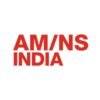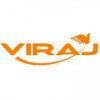
Tata Steel
Proud winner of ABECA 2024 - AmbitionBox Employee Choice Awards
Filter interviews by
Tata Steel Technical Apprentice Trainee Interview Questions and Answers
Tata Steel Technical Apprentice Trainee Interview Experiences
1 interview found
I applied via Company Website and was interviewed in Sep 2022. There were 2 interview rounds.

(3 Questions)
- Q1. The capital of bihar .
- Ans.
The capital of Bihar is Patna.
The capital city of Bihar is Patna.
Patna is the largest city in Bihar.
Patna is located on the southern bank of the Ganges River.
It is an important center for trade, education, and administration in the state.
- Q2. Centre panch ka centre point hota hai.
- Q3. Die kis metrerial ka bana hai
Interview Preparation Tips
- Fitter
- Fresher
Top trending discussions






Interview questions from similar companies

I applied via campus placement at Falakata College, Jalpaiguri and was interviewed in May 2024. There was 1 interview round.
(3 Questions)
- Q1. Define ohm's law
- Ans.
Ohm's law states that the current flowing through a conductor is directly proportional to the voltage across it, and inversely proportional to the resistance of the conductor.
Ohm's law is represented by the formula V = I * R, where V is voltage, I is current, and R is resistance.
It helps in calculating the current flowing through a circuit when the voltage and resistance are known.
It also helps in determining the resis...
- Q2. Why you are join our company?
- Ans.
I am passionate about the industry and believe in the company's values and mission.
I have researched the company and admire its innovative approach to business.
I am impressed by the company's reputation for employee development and growth opportunities.
I align with the company's core values and believe I can contribute positively to its success.
- Q3. Tel me about yourself
Interview Preparation Tips

I was interviewed in Oct 2023.

(4 Questions)
- Q1. What is exothermic and endothermic rex. What is heat transfer. Example of heat transfer modes convection conduction radiation.etc
- Ans.
Exothermic and endothermic reactions release and absorb heat, respectively. Heat transfer is the movement of heat from one object to another through convection, conduction, or radiation.
Exothermic reactions release heat to the surroundings
Endothermic reactions absorb heat from the surroundings
Convection is heat transfer through fluid movement (e.g. boiling water)
Conduction is heat transfer through direct contact (e.g. ...
- Q2. Now day current affairs knowledge
- Q3. Your favorite subject and subject based questions
- Q4. And most important your interview and basic details
Interview Preparation Tips

Apprenticeship Trainee Interview Questions & Answers
Jindal Stainlessposted on 8 Oct 2023
I applied via Approached by Company

(4 Questions)
- Q1. Electrical questions
- Q2. Ammonia cracker , pannel digram types of questions
- Q3. Crane maintenance
- Q4. Motor maintenance

Graduate Apprenticeship Trainee Interview Questions & Answers
Jindal Steel and Powerposted on 19 Sep 2023
I applied via Campus Placement and was interviewed before Sep 2022. There was 1 interview round.
(4 Questions)
- Q1. How many Law of thermodynamics do you know?
- Ans.
There are three laws of thermodynamics.
There are three laws of thermodynamics: the zeroth law, the first law, and the second law.
The zeroth law states that if two systems are in thermal equilibrium with a third system, they are in thermal equilibrium with each other.
The first law states that energy cannot be created or destroyed, only transferred or converted.
The second law states that the entropy of an isolated system
- Q2. What is Stress & question related to strain strain curve.
- Ans. Internal resisting force offered by body before deformation.
- Q3. Do you know material science?
- Ans.
Yes, I have knowledge of material science which involves the study of properties and applications of materials.
I have studied the structure, properties, processing, and performance of materials.
I am familiar with various types of materials such as metals, ceramics, polymers, and composites.
I understand how material properties can be tailored to meet specific requirements in different applications.
I have practical exper...
- Q4. Can you tell me about grain boundaries?
- Ans.
Grain boundaries are interfaces between grains in a polycrystalline material, affecting material properties.
Grain boundaries are regions where the crystal structure changes orientation.
They can affect material properties such as strength, conductivity, and corrosion resistance.
Grain boundaries can be classified as low-angle or high-angle boundaries based on the misorientation angle.
Examples include the use of grain bou...
Interview Preparation Tips

I applied via Campus Placement
All electrical questions

I applied via Referral and was interviewed in Nov 2022. There was 1 interview round.
(2 Questions)
- Q1. Basic accounting questions b/s p/l
- Q2. Which statement shows financial position of company
- Ans.
The balance sheet shows the financial position of a company.
The balance sheet lists the company's assets, liabilities, and equity at a specific point in time.
The statement of cash flows shows the company's inflows and outflows of cash during a specific period.
The income statement shows the company's revenues, expenses, and net income for a specific period.
Financial ratios can also be used to analyze a company's financi...
Interview Preparation Tips

(2 Questions)
- Q1. Tell me about your self
- Q2. What is your qualification

Diploma Apprentice Trainee Interview Questions & Answers
JSW Steelposted on 31 Dec 2022
I applied via Campus Placement and was interviewed in Dec 2022. There were 4 interview rounds.

Online Aptitude For first Round and it was really easy .
(2 Questions)
- Q1. What is destructive and non destructive test ?
- Ans.
Destructive tests damage the material being tested while non-destructive tests do not.
Destructive tests involve breaking or damaging the material to evaluate its properties.
Examples of destructive tests include tensile testing, impact testing, and fatigue testing.
Non-destructive tests evaluate the properties of the material without causing damage.
Examples of non-destructive tests include ultrasonic testing, radiography
- Q2. Examples of destructive tests.
- Ans.
Destructive tests are those that cause permanent damage to the test specimen.
Examples include tensile testing, impact testing, and fatigue testing.
These tests are used to determine the strength, durability, and other mechanical properties of materials.
Destructive tests are often contrasted with non-destructive tests, which do not damage the specimen.
While destructive tests can provide valuable information, they are not
(2 Questions)
- Q1. About yourself and family background.
- Q2. Your strengths and weakness and what field you would like to improve yourself in.
Interview Preparation Tips

I applied via LinkedIn and was interviewed before Mar 2023. There were 2 interview rounds.
Chemical engineering
(6 Questions)
- Q1. Interview chemical engineering
- Q2. Destillation process
- Q3. What is boiler and type
- Ans.
A boiler is a closed vessel in which water or other fluid is heated. There are different types of boilers based on their design and usage.
Boilers are used to generate steam or hot water for heating, processing, or power generation.
Common types of boilers include fire tube boilers, water tube boilers, and electric boilers.
Fire tube boilers have tubes containing hot gases that transfer heat to water surrounding them.
Wate...
- Q4. Reactor how many types
- Ans.
There are two main types of reactors: batch reactors and continuous reactors.
Batch reactors: operate for a fixed amount of time with a specific amount of reactants, then the products are removed and the reactor is cleaned for the next batch (e.g. batch distillation)
Continuous reactors: operate continuously with a steady flow of reactants and products, allowing for a constant production rate (e.g. continuous stirred-tan
- Q5. What is heat transfer coefficient
- Ans.
Heat transfer coefficient is a measure of the ability of a material to conduct heat.
It is a measure of how easily heat can pass through a material.
Higher heat transfer coefficient means better heat conduction.
Common units include W/(m^2*K) or Btu/(hr*ft^2*°F).
- Q6. How meny heat transfer mode
- Ans.
There are three main heat transfer modes: conduction, convection, and radiation.
Conduction: Heat transfer through direct contact between particles.
Convection: Heat transfer through the movement of fluids (liquids or gases).
Radiation: Heat transfer through electromagnetic waves.
Examples: Cooking food on a stove (conduction), heating a room with a radiator (convection), feeling the warmth of the sun (radiation).
Tata Steel Interview FAQs
Tell us how to improve this page.
Tata Steel Interviews By Designations
- Tata Steel Junior Engineer Interview Questions
- Tata Steel Assistant Manager Interview Questions
- Tata Steel Management Trainee Interview Questions
- Tata Steel Associate Engineer Interview Questions
- Tata Steel Mechanical Engineer Interview Questions
- Tata Steel Intern Interview Questions
- Tata Steel Manager Interview Questions
- Tata Steel Senior Manager Interview Questions
- Show more
Interview Questions for Popular Designations
- Apprentice Interview Questions
- Apprentice Trainee Interview Questions
- Apprenticeship Trainee Interview Questions
- Graduate Apprentice Trainee Interview Questions
- Graduate Apprenticeship Trainee Interview Questions
- Diploma Apprentice Trainee Interview Questions
- Apprentice Engineer Interview Questions
- Graduate Apprentice Interview Questions
- Show more
People are getting interviews through
Interview Questions from Similar Companies
Fast track your campus placements
Tata Steel Technical Apprentice Trainee Reviews and Ratings
based on 1 review
Rating in categories
|
Manager
1.6k
salaries
| ₹6 L/yr - ₹21 L/yr |
|
Assistant Manager
1.4k
salaries
| ₹5.2 L/yr - ₹15.5 L/yr |
|
Senior Manager
1.3k
salaries
| ₹9.2 L/yr - ₹35 L/yr |
|
Junior Engineer
898
salaries
| ₹2 L/yr - ₹10 L/yr |
|
Associate Engineer
857
salaries
| ₹2 L/yr - ₹7.8 L/yr |

JSW Steel

Steel Authority Of India

Vedanta Limited

ArcelorMittal Nippon Steel
Calculate your in-hand salary
- Home >
- Interviews >
- Tata Steel Interview Questions >
- Tata Steel Technical Apprentice Trainee Interview Questions











